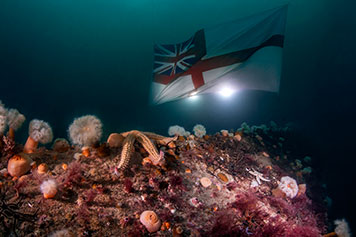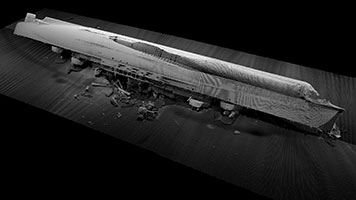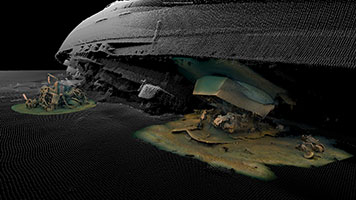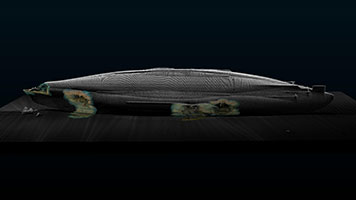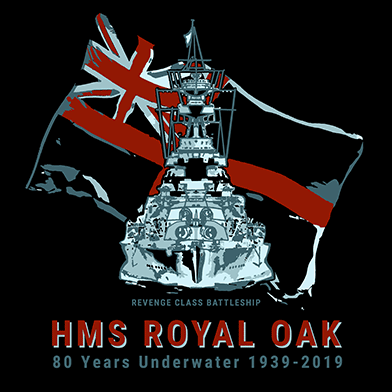
In the early hours of 14th October 1939 HMS ROYAL OAK was struck by four torpedoes fired from the U-47 whilst at anchor in Scapa Flow. The ship sank within minutes, 835 men and boys were lost. The HMS ROYAL OAK 80 Survey took place between October 2018 and November 2019 under special licence from the Secretary of State for Defence. The survey was self-funded and conducted from MV Huskyan by professional divers volunteering their time in collaboration with the Royal Navy Northern Diving Group and the Royal Oak Association, and academic partners at the University of Dundee and Newcastle University. The purpose of the survey was to document this protected war grave at 80 years underwater, to shed new light on the damage that caused the ship to sink and to raise the profile of the loss of the ship and the sacrifice made by her crew.
HMS ROYAL OAK was a WWI battleship of the dreadnought era. She was built at Devonport Dockyard in Plymouth and commissioned on 1st May 1916 into the First Battle Squadron. She saw her first action at the Battle of Jutland on 31st May 1916 but survived to see service again in WW2. Between the wars she was modified with the addition of torpedo blisters to port and starboard, new bridge structures and modified secondary guns. Post sinking, the four propellers were removed and repurposed by the Admiralty along with anchor chain and anchors. No other commercial salvage has taken place.
In the 1980s the Royal Navy began a programme of ceremonial diving to change a White Ensign, which continues to this day. Recreational diving was limited by the local harbour authority at a similar time, and in 2002 she became a controlled site under the Protection of Military Remains Act. Diving can now only take place under special licence from the Ministry of Defence, which has ensured the relative integrity of the site. She is the most complete example of a dreadnought battleship existing underwater and was sunk in full fighting condition.
The ROYAL OAK 80 survey was conducted under special licence from the MOD between October 2018 and November 2019. It focussed on in-water survey techniques to gather high resolution video, still photographs and 3D photogrammetry data in a bid to record the site as it is today, digitally preserving the ship in its current state. Remote survey techniques were used to provide a bathymetrically accurate model of the wreck and identify the location and extent of outlying debris or objects likely to be from the ship. Specialists in explosive effects and historic weaponry contributed analyses of the torpedo damage, exposed munitions and firepower present on the ship.
The site is unique. A near intact dreadnought battleship, she lies in approximately 30m of water, upside down. A 45° angle allows access to the port side deck. The survey describes the site in four main sections: Port/Deck side, Hull, Starboard side, and Outlying targets.
Given her relatively pristine state, HMS ROYAL OAK should continue to be treated as a site of huge historical importance. Notwithstanding her war grave status, she also has substantial relevance to current maritime conservation efforts relating to the removal of oil from shipwrecks. She is a time capsule into WWI naval architecture and an underwater monument to the sacrifice made by her crew.
Methods used by the ROYAL OAK 80 survey team have been developed from earlier survey work and represent a significant achievement in shipwreck visualisation and the teamwork required to succeed. The survey team also made significant contributions to the 80th anniversary commemorations, displaying outputs at community events across Orkney. Survey and outreach methods were highly effective and would benefit future wreck site surveys and wreck management.
